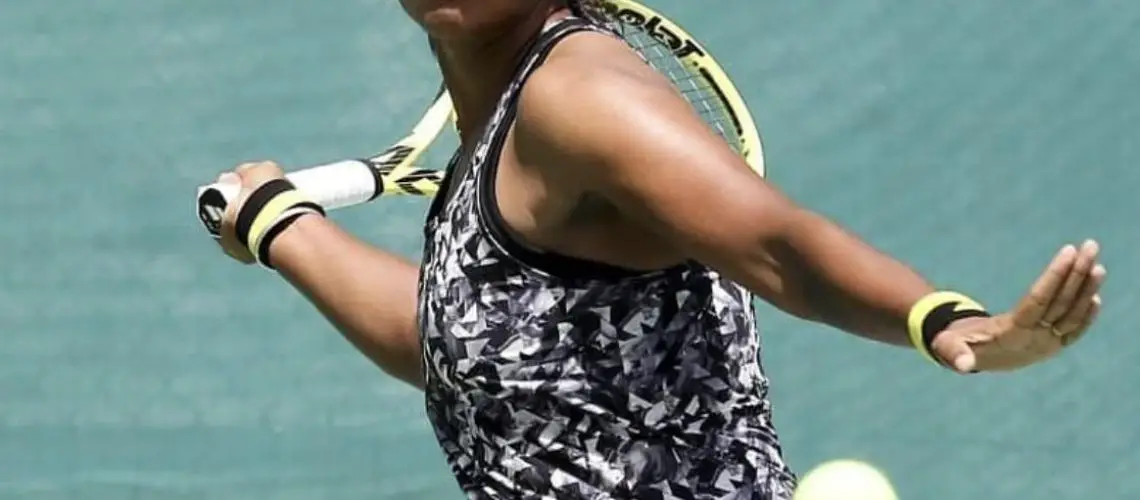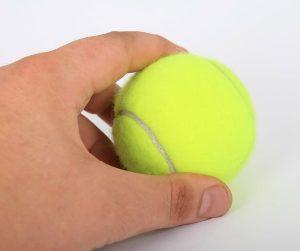We may earn money or products from the companies mentioned in this post.
Introduction to Deuce in Tennis

Tennis is a sport known for its rich history and intricate scoring system Understanding the nuances of this system is crucial for players and enthusiasts alike One of the most important concepts in tennis scoring is “deuce” In this article, we will explore the origins of deuce, the evolution of the scoring system over time, and why understanding deuce is essential in tennis matches
Brief History of Tennis Scoring System
The origins of the word “deuce” can be traced back to French origins, where it was derived from “à deux,” meaning “at two” This term was used to signify when both players had a score of 40-40 or were tied at three points each in a game
As tennis evolved throughout history, so did its scoring system In earlier forms of the game, players would play for an agreed number of points or until one player won a certain number of games However, as tennis became more standardized, a more structured scoring system was introduced
Importance of Understanding Deuce in Tennis Matches
Understanding deuce is vital in tennis matches because it often determines the outcome of closely contested games When both players reach a scoreline of 40-40 or are tied at three points each, they enter into what is known as “deuce”
In deuce, both players have an equal opportunity to win the game by winning two consecutive points The first point won after deuce is called “advantage,” which means that player needs just one more point to win the game However, if their opponent wins the next point, they return to deuce
This back-and-forth dynamic adds excitement and tension to matches since players must navigate through multiple instances of deuce to secure victory It requires mental toughness, strategic thinking, and the ability to perform under pressure
Additionally, understanding deuce allows players to make more informed decisions during a match They can adjust their tactics based on the scoreline and choose the best approach to gain an advantage or turn the game in their favor
In conclusion, deuce is a crucial aspect of tennis scoring that adds drama and intensity to matches By understanding its origins, evolution, and significance, players can enhance their gameplay and spectators can appreciate the intricacies of this captivating sport
The Concept and Rules of Deuce in Tennis

In the fast-paced world of tennis, there are certain rules that add an extra layer of excitement to the game One such rule is the concept of “deuce” Understanding this rule is crucial for players and fans alike, as it can significantly impact the outcome of a match Let’s delve into the definition and explanation of deuce
1 The Significance of a Tied Score at 40-40
Deuce occurs when both players have scored three points each in a game, resulting in a tied score of 40-40 This specific scoreline signifies a critical moment in the game, where it becomes necessary for one player to win two consecutive points to secure victory in that particular game
Reaching deuce adds an element of suspense and intensity to the match, as it brings both players on equal footing It creates a level playing field where every point matters greatly, leading to thrilling rallies and strategic gameplay
2 The Purpose Behind the Deuce Rule
The deuce rule serves multiple purposes within tennis Firstly, it prevents games from extending indefinitely by requiring players to win two consecutive points after reaching deuce This ensures that matches progress smoothly and adhere to time constraints
Secondly, the deuce rule tests a player’s mental strength and ability to handle pressure situations Winning those crucial two points under immense tension showcases skillfulness and resilience on the court
How to Reach a Deuce Situation in a Game

To reach a deuce situation in tennis, various scoring scenarios can unfold during a game Here are some common ways that lead to reaching deuce:
- A player wins three points consecutively, resulting in a score of 40-0 The opponent then stages a comeback and wins three consecutive points to bring the score to 40-40
- Both players win points alternately until the score reaches 30-30 From there, they continue winning points until it reaches 40-40
Regardless of how the deuce situation arises, both players face significant implications in their pursuit of victory
1 Implications for Both Players
For the player who reached deuce after being down 40-0, it represents an opportunity for a remarkable turnaround It gives them a chance to regain control of the game and potentially secure victory by winning two consecutive points
On the other hand, for the player who was leading with a score of 40-0 but allowed their opponent to stage a comeback, deuce presents a challenge They must gather their composure and find ways to overcome their opponent’s momentum in order to avoid losing the game
In conclusion, understanding the concept and rules of deuce is essential in tennis This rule adds tension and excitement to matches while testing players’ mental fortitude under pressure So next time you watch or play tennis, keep an eye out for those thrilling moments when the score is tied at 40-40 – it could be deuce!
Strategies and Tactics during Deuce Situations

In the high-stakes game of tennis, deuce situations can be make or break moments that can determine the outcome of a match To navigate these critical points successfully, players must employ strategic thinking and adaptability One key aspect is analyzing opponents’ strengths and weaknesses
1 Importance of mental focus during critical points
When the score reaches deuce, mental focus becomes paramount It’s crucial to stay present in the moment, shutting out distractions and honing in on the task at hand By maintaining a clear mind, players can better assess their opponent’s strengths and weaknesses
2 Adapting gameplay according to opponent’s style
No two opponents are alike in tennis, which means adapting one’s strategy to counter their particular playing style is imperative during deuce situations Whether it’s adjusting shot selection or changing up tactics, being flexible allows players to exploit weaknesses and gain an advantage
Managing pressure and nerves during tense moments

Tense moments can often lead to heightened pressure and nerves for players However, mastering the art of composure is essential when facing deuce situations
1 Staying calm under pressure
The ability to remain calm under pressure is a skill that separates elite athletes from the rest Taking deep breaths, focusing on positive thoughts, and trusting one’s training can help maintain composure even in the most intense moments
2 Maintaining consistent performance
In deuce situations, consistency is key By sticking to their game plan instead of succumbing to panic or desperation shots, players increase their chances of success Consistency builds confidence while also putting additional pressure on opponents who may be struggling to maintain the same level of play
Navigating Through the Advantage Points, Winning, and Losing Deuces

In the game of tennis, reaching a deuce can often make or break a player’s momentum It is at this crucial point that advantage (Ad) points come into play, adding an extra layer of excitement and strategy to the match
Understanding Advantage (Ad) Points after Reaching Deuce
When a game reaches deuce, both players are tied at 40-40 To break this tie and gain an advantage, the concept of “Ad In” and “Ad Out” is introduced The server has the opportunity to win an Ad In point, which means they have the advantage over their opponent On the other hand, if the receiver wins a point at deuce, it is called an Ad Out point
Rules for Winning a Game after Obtaining an Advantage Point:
- If the server wins an Ad In point, they only need to win one more point to win the game
- If the receiver wins an Ad Out point, they must win two consecutive points to win the game
The Effects on Match Momentum Following Won or Lost Deuces
Winning or losing deuces can have a significant impact on players’ confidence levels and can shift dynamics within match play
Impact on Player Confidence Levels:
When a player successfully converts an advantage point into winning a game, it boosts their confidence They feel in control of their performance and believe they have gained an edge over their opponent Conversely, losing an advantage point can deflate a player’s confidence as they may doubt their ability to close out games effectively
Shifting Dynamics within Match Play:
Deuces can be turning points in a match Winning a deuce and taking the lead can provide a player with momentum, making their opponent feel the pressure to catch up On the other hand, losing a deuce can shift the momentum in favor of the opponent, giving them renewed energy and motivation to make a comeback
In conclusion, understanding advantage points after reaching deuce is crucial for players to navigate through intense moments in tennis matches It not only affects the rules for winning games but also plays a significant role in shaping player confidence levels and shifting dynamics within match play
Conclusion: Embracing the Challenge of Deuces in Tennis Matches

The Importance of Mastering the Mental Aspect During Tight Situations
In tennis, the mental game is just as crucial as physical prowess When facing deuces, those nail-biting moments when the score is tied, it’s essential to keep a strong mindset As players battle for that crucial advantage, maintaining composure and focus can make all the difference By embracing the challenge of deuces and mastering the mental aspect, players can elevate their performance to new heights
During tight situations like deuces, doubts and nerves often creep in It’s easy to lose focus or become overwhelmed by negative thoughts However, successful players understand how to harness these emotions and turn them into an advantage They stay calm under pressure and use their mental strength to make smart decisions on each shot By remaining composed and confident during deuces, players increase their chances of coming out on top
How Developing Strategies Can Lead to Success When Facing Frequent Deuces
In tennis, having a well-thought-out strategy is key to overcoming challenges like frequent deuces Rather than relying solely on instinct or luck, successful players develop effective tactics tailored to different situations they may encounter during a match By analyzing opponents’ strengths and weaknesses and adapting their game plan accordingly, they gain an edge when facing repeated deuce scenarios
Strategies for handling frequent deuces can include varying shot selection, utilizing specific techniques to exploit opponents’ vulnerabilities, or even employing unique serving patterns By thinking strategically rather than simply reacting in the moment, players can dictate play and seize control during these critical moments in a match
Furthermore, developing strategies helps players maintain consistency throughout a match Instead of relying on sporadic bursts of brilliance or hoping for lucky breaks, players who have a game plan can counter their opponents’ tactics effectively This not only increases their chances of success but also boosts their confidence and mental resilience
In conclusion, embracing the challenge of deuces in tennis matches is an integral part of becoming a successful player By mastering the mental aspect and developing effective strategies, players can navigate these tense moments with poise and increase their likelihood of victory So the next time you find yourself in a tight situation on the court, remember to embrace the challenge and trust in your abilities to come out on top
Useful Links

Deuce In Tennis: Definition, Origin & Examples
deuce
Is ‘deuce’ (tennis) a corruption of the French phrase ‘à deux …
Deuce in Tennis: Meaning, Origin, & Longest Ever – YouTube
French and the Language of Love, Deuce, Let and Tennis
What is Deuce in Tennis? – Discover The True Meaning of …
What Does Deuce Mean in Tennis?
What Is A Deuce Court In Tennis? Definition & Meaning
Why do we say love? And other tennis jargon
What Does Deuce Mean in Tennis: A Comprehensive Guide
Deuce in tennis: what happens to your bet in case of a tie?
Deuce – definition of deuce by The Free Dictionary
Deuce Definition & Meaning
What Is Deuce In Tennis? – Tennis Ball Game
What Is Deuce And Advantage In Tennis? – The Racket Life
Deuce Definition & Meaning
What Is Deuce in Tennis? Meaning, Purpose & FAQs
What is Deuce in Tennis? » TennisReboot
DEUCE | definition in the Cambridge English Dictionary
What Does Ad Mean in tennis?






